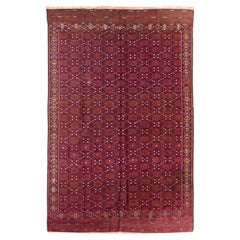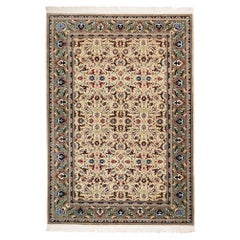West Asian Rugs
21st Century and Contemporary Revival West Asian Rugs
Wool, Natural Fiber, Organic Material
Late 19th Century Sultanabad Antique West Asian Rugs
Wool
Mid-20th Century Kilim West Asian Rugs
Wool, Natural Fiber
Mid-20th Century Kilim West Asian Rugs
Wool, Natural Fiber
21st Century and Contemporary Oushak West Asian Rugs
Wool, Natural Fiber, Organic Material
21st Century and Contemporary Revival West Asian Rugs
Wool, Organic Material, Natural Fiber
Early 20th Century Oushak West Asian Rugs
Wool, Natural Fiber, Organic Material
Early 20th Century Oushak West Asian Rugs
Wool, Natural Fiber, Organic Material
Early 20th Century Kilim West Asian Rugs
Wool, Natural Fiber
Early 20th Century Kilim West Asian Rugs
Wool, Natural Fiber, Organic Material
Mid-20th Century Kilim West Asian Rugs
Wool, Natural Fiber
21st Century and Contemporary Revival West Asian Rugs
Wool, Natural Fiber, Organic Material
Mid-20th Century Kilim West Asian Rugs
Wool, Natural Fiber, Organic Material
21st Century and Contemporary Oushak West Asian Rugs
Wool, Natural Fiber, Organic Material
21st Century and Contemporary Revival West Asian Rugs
Wool, Natural Fiber, Organic Material
21st Century and Contemporary Revival West Asian Rugs
Wool, Natural Fiber, Organic Material
Mid-20th Century Oushak West Asian Rugs
Wool, Natural Fiber
Early 20th Century Oushak West Asian Rugs
Wool, Natural Fiber, Organic Material
Early 20th Century Kilim West Asian Rugs
Wool, Natural Fiber, Organic Material
Mid-20th Century Oushak West Asian Rugs
Wool, Natural Fiber
21st Century and Contemporary Oushak West Asian Rugs
Wool, Natural Fiber, Organic Material
Late 19th Century Kilim Antique West Asian Rugs
Wool, Natural Fiber
21st Century and Contemporary Revival West Asian Rugs
Wool, Natural Fiber, Organic Material
19th Century Antique West Asian Rugs
Wool
Mid-20th Century Kilim West Asian Rugs
Wool, Natural Fiber
21st Century and Contemporary Revival West Asian Rugs
Wool, Natural Fiber, Organic Material
21st Century and Contemporary Oushak West Asian Rugs
Wool, Natural Fiber, Organic Material
21st Century and Contemporary Revival West Asian Rugs
Wool, Natural Fiber, Organic Material
Late 19th Century Oushak Antique West Asian Rugs
Wool, Natural Fiber, Organic Material
Mid-20th Century Kilim West Asian Rugs
Wool, Natural Fiber, Organic Material
21st Century and Contemporary Revival West Asian Rugs
Wool, Natural Fiber, Organic Material
1990s Kilim West Asian Rugs
Wool
21st Century and Contemporary Revival West Asian Rugs
Wool, Natural Fiber, Organic Material
21st Century and Contemporary Oushak West Asian Rugs
Wool, Natural Fiber, Organic Material
Early 20th Century Kilim West Asian Rugs
Wool, Natural Fiber
21st Century and Contemporary Revival West Asian Rugs
Wool, Natural Fiber, Organic Material
21st Century and Contemporary Revival West Asian Rugs
Wool, Natural Fiber, Organic Material
21st Century and Contemporary Oushak West Asian Rugs
Wool, Natural Fiber, Organic Material
Late 20th Century Kilim West Asian Rugs
Wool, Natural Fiber
2010s Revival West Asian Rugs
Wool, Organic Material, Natural Fiber
Mid-20th Century Oushak West Asian Rugs
Wool, Natural Fiber
Mid-20th Century Kilim West Asian Rugs
Wool, Natural Fiber
21st Century and Contemporary Revival West Asian Rugs
Wool, Natural Fiber, Organic Material
21st Century and Contemporary Revival West Asian Rugs
Wool, Natural Fiber, Organic Material
21st Century and Contemporary Revival West Asian Rugs
Wool, Natural Fiber, Organic Material
21st Century and Contemporary Revival West Asian Rugs
Wool, Natural Fiber, Organic Material
21st Century and Contemporary Revival West Asian Rugs
Wool, Natural Fiber, Organic Material
21st Century and Contemporary Revival West Asian Rugs
Wool, Natural Fiber, Organic Material
21st Century and Contemporary Revival West Asian Rugs
Wool, Natural Fiber, Organic Material
2010s Revival West Asian Rugs
Wool, Natural Fiber, Organic Material
Mid-20th Century Tabriz West Asian Rugs
Wool
21st Century and Contemporary Revival West Asian Rugs
Wool, Natural Fiber, Organic Material
21st Century and Contemporary Revival West Asian Rugs
Wool, Natural Fiber, Organic Material
Early 20th Century Oushak West Asian Rugs
Wool, Natural Fiber
21st Century and Contemporary Revival West Asian Rugs
Wool, Natural Fiber, Organic Material
21st Century and Contemporary Revival West Asian Rugs
Wool, Natural Fiber, Organic Material
1990s Country West Asian Rugs
Wool, Goat Hair
21st Century and Contemporary Revival West Asian Rugs
Wool, Natural Fiber, Organic Material





